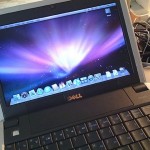So I’ve been doing my thing. Trying to get the gist of it all and get things in place, working, etc … and then they start with this Rails 3.0 stuff that it doesn’t seem I can run …
What I mean is, developers seemed to have moved on to Rails 3 but I don’t understand how. I decided, okay, it’s an RC (Release Candidate) so I’ll take the plunge and install it on a public server and start developing. Welp, Rails 3 requires ruby 1.9.2 far as I know and I can’t get that installed successfully in a FreeBSD environment when the latest ruby is 1.8.7 (2009-12-24 patchlevel 248) (which currently has a UTF-7 encoding XSS vulnerability in WEBrick.) … sure 1.9.2 will install, but it doesn’t install a “ruby” binary, it’s called ruby19 and you have to symlink or copy it to “ruby” … Why?
Can you run rvm on a production server? Would you? Why?
In Rails defense, their website isn’t advocating a new release nor to install it, yet touts how many people are running it in production already … Bah! Cutting edge.
In other words, I think there’s just still too much stuff up in the air to actually try to massage Rails 3 into place before the rest of the world is ready for it. I mean, Rails isn’t the only thing in my servers that use ruby …
… A couple hours later UPDATE: Ruby 1.9.2 Released
